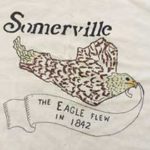
Eagle Feathers #272 –Gentle Giants
By Bob (Monty) Doherty
It has been called a buffalo, a steer, a cow, a bison or a bull, but for the familiar, this gentle giant’s name is simply, the ox. The first English livestock arrived in her American settlements in the 1630’s, most being brought to the sprouting Massachusetts Bay Colony in the north.
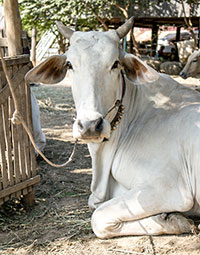
When you refer to an acre, it is the term that was created to describe the work that oxen did in one day. As a draught animal, the ox became a favorite in clearing thousands of acres of brush, trees and notably her New England rocks. After being plowed to the surface and hauled aside, these stones were used to assemble her historic walls. It is said that the length of New England’s many stone walls could equal the distance to the moon.
During the great migration west, the thousands of heavy wagons used to get there were primarily drawn by oxen. Although slower, they were cheaper to buy and feed and calmer and stronger than horses. Through the years, Somerville was witness to oxen treading up and down Milk Row hauling her wagons and helping build her commerce.
The word oxford means ox-crossing. Prince Charles once considered the name of Oxford for our city of Boston. He might have been thinking of his own Oxford, the site of the oldest English-speaking University in the world.
The first European settler of Boston was Reverend William Blackstone. He was considered a recluse or hermit by onlookers of the day. After selling his land, which became today’s Boston Common, he relocated to today’s Rhode Island, becoming that state’s first English settler. One of his eccentricities was that he traveled on the back of his trained ox. A steel statue in Pawtucket, Rhode Island honors him and his cherished ox.
It was a fifty-six-day, oxen-driven operation through forests, swamps, ice and deep snow in the dead of the winter of 1775-76. Revolutionary Colonel Henry Knox and his men retrieved 59 heavy canons captured from Fort Ticonderoga and delivered them to Cobble Hill and other sites where they helped motivate the British Evacuation of Boston. His volunteers and oxen hauled 120,000 pounds of bulky ordnance three hundred miles for the American cause. It was one of the greatest logistical feats of the American Revolution.
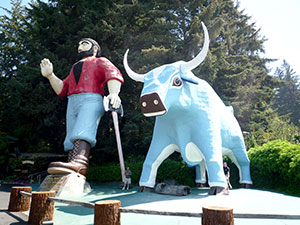
The giant lumberjack folk hero Paul Bunyan and stories of his giant companion Babe the Blue Ox have circulated across America for over a century. Through the years, from Maine to California, logging and lumbering locales promoted their areas with images of larger-than-life statues of the two friends.
The Middlesex Canal was the super highway of its time. This 26-mile-long canal flowed through the length of Somerville. Beginning in 1803 and for over fifty years, it carried the historic waters of the Concord River. Much of this incredible work was done by oxen.
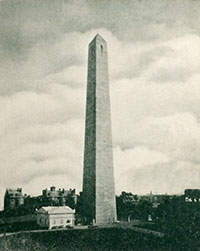
The Bunker Hill Monument commemorates the first major battle of the American Revolution and honors the patriots who gave their lives. It’s a 221-foot granite quarried obelisk with a 294-step winding staircase to the top. Most of its 7,000 tons were hauled 12 miles from Quincy to the site by oxen.
Somerville’s central library was designed by E.T., not the Extra Terrestrial, but by architect Edward Lippincott Tilton. He also developed part of the United States Immigration Station at Ellis Island. Somerville’s library architecturally mirrors part of that facility. Tilton incorporated in the library a bold decorative band of Roman-style ox heads which surround the outside of the building.
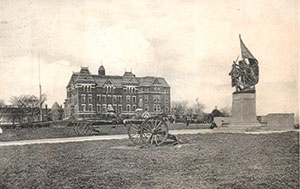
A Western Massachusetts family has a huge following on social media of their twelve-year old 3,000-pound Gentle Giant Ox named Tommy who was named after the six-time Super Bowl champion, Tom Brady.
These gentle giants remained the main beast of burden in America until the late 19th century when horses, mules and steam engines replaced them.
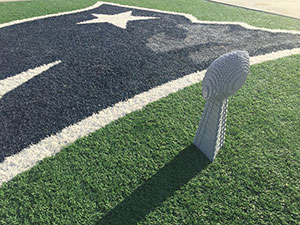















Reader Comments